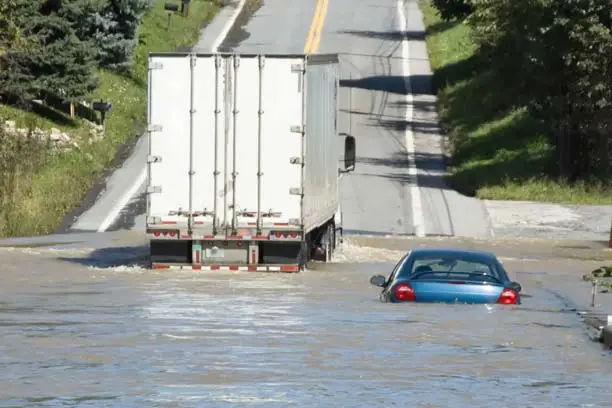Safe Driving Tips During a Flash Flood


When a flash flood strikes, you need to be prepared behind the wheel. Waters can rise quickly, and emergency crews can’t always block off roadways right away, so you have to watch for warning signs. Knowing how to drive in a flood or avoid one altogether can make all the difference. Here’s what to know about navigating a flooded road.
The National Weather Service has four levels of flood-related warnings. Use them to plan for safety during floods. If there’s flooding in the forecast, consider changing your driving plans.
Floods are the top cause of death in thunderstorms, and over half of flood-related drownings happen when someone drives into flood waters. That’s never safe; the best advice for how to drive through water is to turn around and head to higher ground. It’s not worth the damage to your car and the danger to your life.
It can be hard to estimate how deep water is on a flooded roadway, and the depth and conditions can change quickly.
If you’re in your home and floodwaters are rising, you may be tempted to take your vehicle and leave. But that could put you in more danger. In some situations, more people die in floodwaters in their cars than in their homes.
In some locations, it’s common for low bridges and roadways to flood periodically. If these areas are near your home, work or areas where you usually travel, plan alternate routes ahead of time so you can avoid dangerous waters.
Avoid bridges over fast-moving floodwater, since the water can damage the footings and make the bridge unstable.
For safety during floods on the roads, take these two steps:
If your vehicle gets stuck in flood waters you should:
When it comes to driving in treacherous conditions, the most important thing is to keep yourself and any passengers safe. But you’ll also want to make sure your vehicle is protected. Reach out to a Farm Bureau agent to see what insurance policies you need to protect your car and any possessions in it.